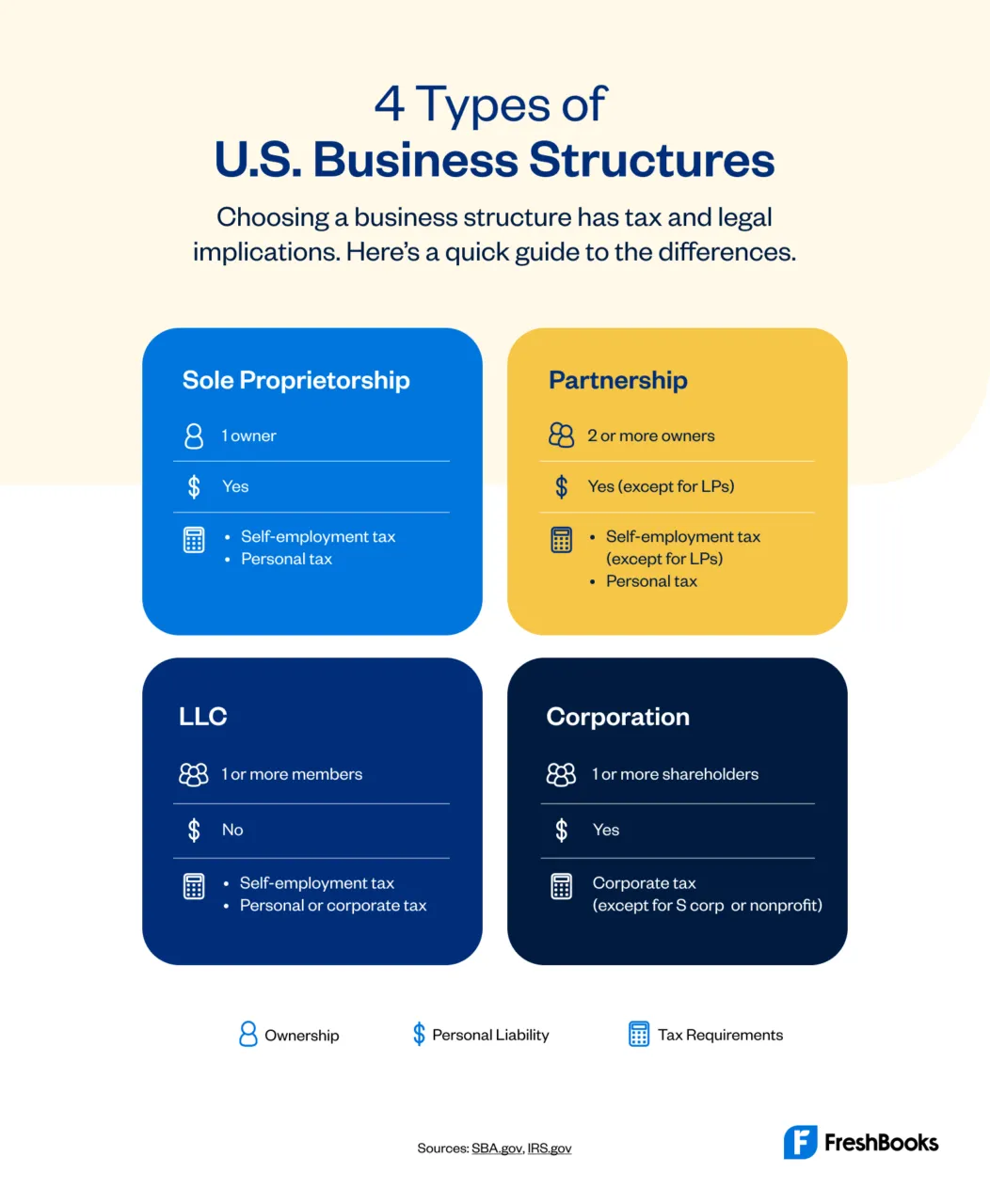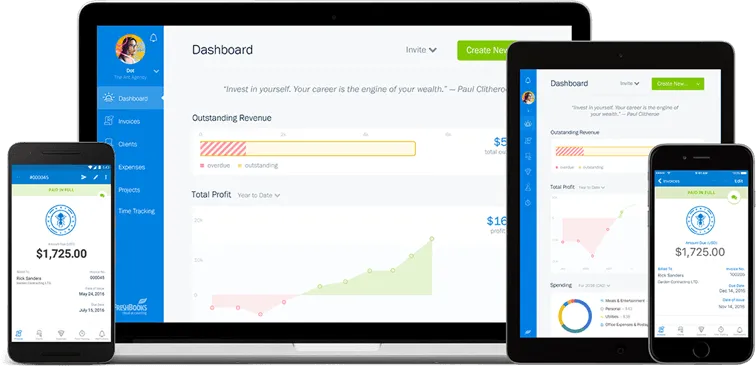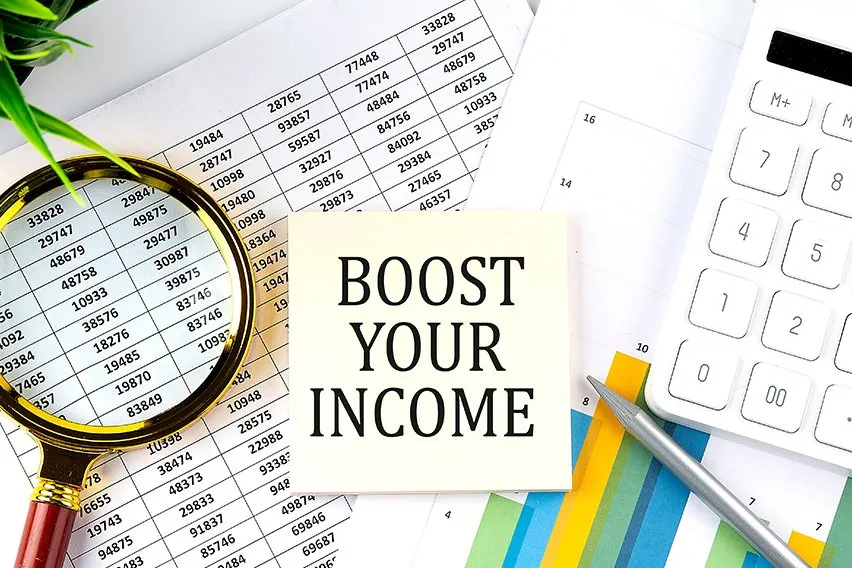Owner’s Draw vs. Salary: Paying Yourself as a Business Owner

When you decided to start your business, making money was most likely at the top of your priority list. But between unsteady profits, pouring money back into the business, and simply not knowing how much is “fair” to take, most business owners struggle with how to pay themselves a personal income.
Whether you’re a sole proprietor, a corporation, or a partner in a partnership, it’s important to strike a balance between getting reasonable compensation and not draining your business. Here’s what business owners need to know about paying themselves, as well as some handy tips on sorting out income tax.
Key Takeaways
- The two main ways to pay yourself as a business owner are owner’s draw and salary
- An owner’s draw is a one-time withdrawal and depends on your owner’s equity
- Salary is a regular, fixed payment like an employee would receive
- Consider your profits, business structure, and business growth when deciding how to pay yourself as a business owner
Here’s what we’ll cover:
Pros and Cons of an Owner’s Draw
How do Business Owners Pay Themselves?
How Much Should You Pay Yourself?
Owner’s Draw vs. Salary
Business owners or shareholders can pay themselves in various ways, but the two most common ways are via owner’s draw and salary. Here are the fundamental differences between the two.

Owner’s Draw
An owner’s draw is a one-time withdrawal of any amount from your business funds. However, owners can’t simply draw as much as they want; they can only draw as much as their owner’s equity allows.
Owner’s equity refers to your share of your business’ assets, like your initial investment and any profits your business has made. For example, if you invested $50,000 into your business entity and your share of the profit is $25,000, your owner’s equity account is $75,000. If you draw $30,000, your owner’s equity goes down to $45,000.
With the draw method, you must pay income tax on all your profits for the year, regardless of the amount you draw. The Internal Revenue Service (IRS) also requires that you pay your self-employment taxes, Social Security and Medicare taxes, and estimated taxes.
Pros and Cons of an Owner’s Draw
The primary benefit of an owner’s draw is that it offers flexibility. You can adjust your wages based on the success of your business; a high-profit quarter would give you more owner’s equity and, therefore, a larger owner’s draw. You can also take an owner’s draw as often as you want, as long as you have enough in your owner’s equity account.
The downside of the draw method is that it’s more unsteady than salary. Owner’s draws also require more planning to ensure you have adequate funds in your business, especially in partnerships where more than one person may be withdrawing their owner’s equity. You’ll also have to set some money aside to pay taxes at the end of the financial year, as they aren’t deducted from an owner’s draw.
How are Owner’s Draws Taxed?
Owner draws are counted as a profit rather than a business expense, so it’s considered taxable income. If you’re in a partnership or the sole proprietor of your business, this business income counts as your personal income. It’s important to plan for this when you take an owner’s draw to have enough money set aside to pay tax at the end of the financial year.
Salary
Instead of taking a draw (the amount of which can vary per draw), you can choose to take a salary instead. A company owner’s salary works pretty much like a regular employee’s salary—you decide on your wages and give yourself a paycheck every pay period.
If small business owners pay themselves via a salary, both federal and state taxes are automatically taken out of their paychecks, so they don’t have to file their own Federal Insurance Contributions Act tax (FICA; Social Security/Medicare) or self-employment taxes. Owners can even give themselves a raise as their companies grow and award themselves with quarterly or annual bonuses.
The biggest downside to taking a personal income is figuring out how much is “reasonable compensation” for you and the IRS. If the IRS considers your salary too high for the services you are rendering, it could raise many red flags.
Pros and Cons of a Salary
Paying yourself a salary offers two main benefits: A steady income and easier tax preparation. A set salary ensures you’ll have regular cash flow, which can be helpful when applying for credit and mortgages. State and federal income taxes are automatically deducted from your salary, so you don’t have to set any extra money aside for personal income tax.
On the downside, determining a reasonable salary is up to you. You’ll need to set a salary rate that provides enough personal income, keeps your business working productively, and satisfies the IRS. Salaries that the IRS deems ‘unreasonable’ can raise flags and create scrutiny for you and your company.
Which Is Best for You?
The type of payment method you choose can be decided by various factors, although none influence it more than your business structure/entity type (which we will go into more detail about below). You can also choose both methods and give yourself a salary while taking a draw from your equity. The drawback is that two completely different tax processes apply, so you’ll have to put in extra time and effort while preparing your personal tax return to avoid mistakes and missed deadlines.
Regardless of which you choose—draw or salary—remember to always pay yourself from your business’ profit, not revenue! In addition, you must pay taxes on your income/profit to avoid getting flagged by the IRS.
How Do Business Owners Pay Themselves?
Before you are even faced with deciding how to pay yourself, you need to decide what kind of structure you want for your business. Your business structure affects many aspects of your operations, including the best way to pay yourself as a business owner.
Below are the 4 main types of businesses and the recommended payment method (owner’s draw vs. salary) for each.

Sole Proprietorship
Most businesses opt to be recognized as sole proprietorships because it’s the easiest and most affordable type of business to set up. In a proprietorship, you and you alone are the business owner, so you are legally recognized as one and the same entity. All profit goes to you as the sole proprietor, but you are also personally liable for any losses.
Sole proprietors usually take money from the business in the form of a draw, which then reduces your owner’s equity. You are taxed for the overall profit of your business, no matter how much you actually draw, and you have to file it on your income tax return for the IRS.
Partnership
Under a partnership, you may have one or more people that you share business profits with. You receive money based on your share in the company and any prior partnership agreements. Like a proprietorship, you and your business partners are liable for all losses incurred by the business.
Partners usually take money in the form of distributions or their share of the profits. You can’t earn a salary under a partnership but can get guaranteed payments for services rendered. Guaranteed payments are separate from your profit share, and you have to pay income taxes on them in addition to filing them on your personal tax return for the IRS.
Limited Liability Company
A limited liability company (LLC) is a business structure that separates owner(s) from the businesses they run. This means that individuals are not liable in the case of losses or lawsuits—the company, however, is.
Whether you’re running it on your own or with partners, business owners usually take a draw from the profits. Single-member LLCs are paid out and taxed by the IRS like sole proprietors, while multi-member LLCs are paid out and taxed like a partnership.
Corporation
A corporation is a business entity usually comprised of multiple owners or shareholders. Like LLCs, individual owners are not responsible for any losses incurred by the company. There are two main kinds of corporations: S corps and C corps.
In an S corp, all shareholders must pay taxes on their share of ownership. Shareholders get paid through distributions but take a salary (rather than a draw), especially since many shareholders are also typically employees.
In a C corp, owners receive non-taxable dividends if they are not actively working for the business. If you are an owner but also an employee, you can get both dividends and a salary (rather than a draw).

How Much Should You Pay Yourself?
As a business owner, you don’t want to take too much and drain your business. However, you also don’t want to take less than you need and deserve.
Now that you know the different ways to pay yourself—draw vs. salary—the next step is to figure out how much you should take home. Below are some of the most important factors to consider when determining a reasonable salary or owner’s draw.
Entity Type
We cannot stress this enough: How you structure your business significantly influences how you should pay yourself (draw or salary)! Take your time to consider if you want a sole proprietorship, partnership, LLC, or corporation (a decision that impacts more than your payment method), and the rest will follow.
Profits
Technically, you can take as much money as you want, especially if you’re a sole proprietor or in a single-member LLC. But if you take a draw or salary that’s too large, you risk crippling your business.
Always look at your profits (and cash flow) before deciding on your paycheck. Make sure your share of the profit leaves enough in your business account to cover bills, income taxes, investments, and other operating expenses. And again, take only from your company profits, not your overall revenue.
Business Expenses and Needs
Depending on your business’s stage, the amount you take home could change. While this flexibility can make budgeting difficult, it also allows you to anticipate and adjust to your business’s needs.
If your business is just starting or profits are relatively low, you’ll likely have to take a smaller paycheck until revenues stabilize. If your business is booming, you can afford to give yourself a bit more on top as a reward for good performance.
Value/Experience
Don’t forget to take your own worth into account! As a business owner, you’re providing some incredible value to your company, so allow yourself to take what you deserve. Base your take-home draw or salary on your experience, previous salary in a similar position, hours worked, other contributions, and the average for business owners in your industry.
Of course, you also have to consider your business size and location. If you used to work at a major corporation in the city, that amount would likely be too large to justify for a small startup in a more rural location.
Expenses
Being a small business owner is pretty much a full-time job, and everyone working full-time deserves a living wage. When deciding how much to pay yourself, make sure that the amount covers your personal expenses (food, rent, gas money, etc.) at the very least, with a little bit on top of savings and small luxuries.
Other Tips
- Be consistent with how you pay yourself, whether you choose owner’s draw or salary. This makes it easier to budget as an individual and as a business.
- When cash flow is tight, pay your employees and suppliers before anything else. Putting yourself first, regardless of financial circumstances, can lower morale and divert crucial funds away from your operations.
- Don’t withdraw your entire profit amount. Keep some money in the business account to allow for investments and growth—you can always raise your salary/draw amount down the line when the business is more profitable.
Conclusion
Paying yourself as a business owner can be tricky, but it gets easier and more intuitive with time. Owner’s draw and salary both have advantages, so consider your business structure to see which method fits best for you. You can even choose to use both, just remember that they’re taxed differently, so you’ll have to be careful with your accounts.
When deciding how much to pay yourself, it’s also important to consider how you want your business to grow. Keep in mind that your business is not an unlimited source of money, so don’t dip into your accounts without carefully considering the implications. As with any type of payment, maintain clear records so that you can accurately report your income for tax season.
If you’re looking for a tool to help you manage your income and expenses, Freshbooks offers a user-friendly invoicing and accounting software. With Freshbooks, you can easily track your income and expenses, generate financial reports, and estimate your taxes. Its cloud-based platform allows you to access your financial information from anywhere, anytime.

FAQs on Owner Draw vs. Salary
What is the owner-draw tax rate?
There’s no set rate for the owner’s draw. The only restrictions are your owner’s equity and what you consider a reasonable amount to keep your business healthy and growing.
Is LLC owner’s draw taxable?
Owner’s draw is considered taxable income, whether you’re a sole proprietor, partner, or part of an LLC. If you’re a single-member LLC, you’ll be taxed like a sole proprietor, while multi-member LLCs are taxed like partners in a partnership.
What percentage should business owners pay themselves?
There’s no set percentage to follow for paying yourself as a business owner. Instead, you’ll want to let your company’s growth dictate how your owner’s draw or salary changes. Consider how much of your business’ profits you need to pay your employees and suppliers and how much is needed for business growth and taxes, then take a reasonable salary from the remaining amount.
How to report your owner’s draw on taxes?
Taxing an owner’s draw depends on your business entity type. For sole proprietorships, you’re taxed on your business’s profit, not the size of your owner’s draw. For partnerships, the taxation is similar, except each partner includes their share of income from profits on their personal taxes.
RELATED ARTICLES

 How to Avoid a Bad Hire: 5 Hiring Mistakes Identified
How to Avoid a Bad Hire: 5 Hiring Mistakes Identified How to Hire Good Employees in 8 Easy Steps
How to Hire Good Employees in 8 Easy Steps Boost Your Profits Without Increasing Sales: A How-To Guide
Boost Your Profits Without Increasing Sales: A How-To Guide 10 Leadership Skills for Business
10 Leadership Skills for Business How to Motivate Employees?
How to Motivate Employees? Setting Small Business Goals
Setting Small Business Goals